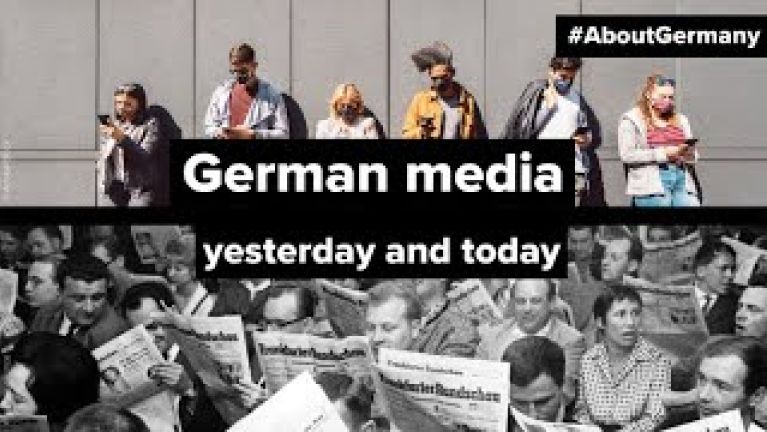All from a single device
The smartphone stands for media change in Germany. It makes information and entertainment accessible anywhere and at any time.

Dieses YouTube-Video kann in einem neuen Tab abgespielt werden
YouTube öffnenThird party content
We use YouTube to embed content that may collect data about your activity. Please review the details and accept the service to see this content.
Open consent formThe progress in digitalization is also resulting in continuing rapid changes to the media in Germany. The key technical device in this process is the smartphone which offers access to the internet everywhere. This also makes the digital versions of the classic media, such as newspapers and magazines, television and radio, accessible. The printed newspaper, the radio set and even the television are decreasing in significance.
New technologies form the basis of change
The current changes are based on technology: Thanks to constantly improving smartphones and fast mobile internet connections, contents can be accessed everywhere, not just within people’s own four walls. All of today’s consumers, but especially younger people, are now using these possibilities. Almost 90 per cent of people in Germany aged 14 and above own a smartphone, while almost 95 per cent of them use it every day. And more than half of these people read the latest news on their smartphone.

Dieses YouTube-Video kann in einem neuen Tab abgespielt werden
YouTube öffnenThird party content
We use YouTube to embed content that may collect data about your activity. Please review the details and accept the service to see this content.
Open consent formMany providers are competing for people’s time
The second reason for the rapid changes in people’s behaviour results from these technical possibilities. More and more offers are competing for people’s attention and limited time budgets. On the one hand, mobile devices have extremely increased the time that media can be used. In addition to this, alongside communication via platforms such as Facebook, Instagram, Twitter and the many messaging apps, there are infinite amounts of information and entertainment offers that are accessible anywhere and at any time.
Less print versions and more digital newspapers
Recent changes in Germany’s newspaper landscape now show that the number of sold copies of more than 300 different daily papers in Germany has fallen to 14.9 million a day over the past 20 years. That’s almost half the number of copies registered in the year 2000. In 2020, the newspapers with the highest number of sales were the popular tabloid Bild, followed by the Süddeutsche Zeitung (SZ) and the Frankfurter Allgemeine Zeitung (F.A.Z.). But at the same time, the total number of people reading the newspapers, including via the internet, is now larger than ever before. 59.7 million of the country’s 70.6 million German-speaking inhabitants aged 14 upwards gain their information from the daily newspapers.
You would like to receive regular information about Germany? Subscribe here:




